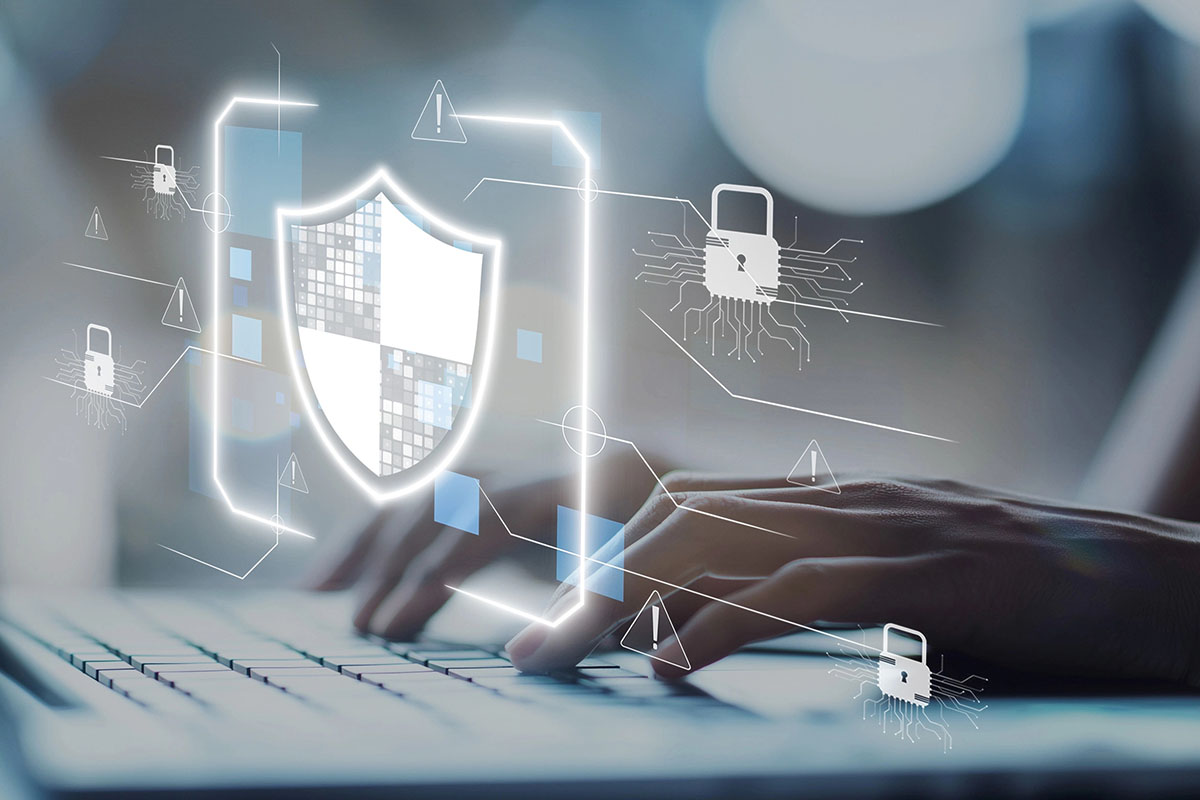

Seattle Cybersecurity Tips: Keyloggers Explained & How to Detect Them



Keyloggers are tools designed to record every keystroke made on a device. They operate covertly, capturing sensitive information such as passwords, credit card numbers, chat messages, and browsing history. To protect against them, proper Seattle cybersecurity is crucial, and awareness of these risks is essential.
Identifying keyloggers is vital for maintaining strong cybersecurity. These invisible threats enable attackers to steal personal and financial data without immediate signs of intrusion. Organizations face risks like business email compromise, while individuals may suffer identity theft or financial loss. Detecting keyloggers early prevents these consequences by stopping data leaks before they escalate.
We’ll help you understand:
- How keyloggers function and the variety of techniques they use
- The differences between software and hardware keyloggers
- Common methods keyloggers employ to infiltrate devices
- Warning signs that indicate possible infection
- Effective detection methods to uncover hidden keyloggers
Armed with this knowledge, you can protect your devices from one of the stealthiest cybersecurity threats out there.
Types and Uses of Keyloggers
Keylogger types can be categorized into two main groups: software keyloggers and hardware keyloggers.
1. Software Keyloggers
Software keyloggers are programs that run on the target device, recording keystrokes and other activities.
2. Hardware Keyloggers
Hardware keyloggers are physical devices that intercept and record keystrokes between a computer and a keyboard.
Legitimate Uses
Legitimate uses include parental monitoring to uphold online safety, employee oversight for productivity management, and IT troubleshooting to diagnose technical issues.
Malicious Intent
Keyloggers can be used for malicious activities such as stealing sensitive information like passwords, credit card details, or personal data without the user’s consent.
Mechanisms Behind Keyloggers
Once a keylogger is installed, these malicious programs are capable of capturing a wide array of data, posing significant risks to individuals and organizations alike.
Keylogger Infection Methods
Knowing how keyloggers infect devices is the first step in preventing such attacks. Here are some common methods:
- Phishing Attacks: Cybercriminals often use deceptive emails or messages to trick users into clicking on malicious links or downloading infected attachments. These phishing attempts can be highly convincing, making it essential to remain vigilant and verify the authenticity of any communication before taking action.
- Suspicious Downloads: Keyloggers may also be bundled with legitimate-looking software or applications that users unknowingly download from untrusted sources. To mitigate this risk, it’s important to only download software from official websites and reputable platforms.
- Malicious Websites: Visiting compromised or malicious websites can lead to automatic downloads of keyloggers onto unsuspecting users’ devices. Employing reliable security measures such as ad blockers and web filters can help protect against such threats.
Data Captured by Keyloggers
Once a keylogger successfully infects a device, it begins its covert operation by recording various types of data. Here are some examples of the information keyloggers are designed to collect:
- Keystrokes: As the name suggests, keyloggers primarily track every keystroke made by the user. This includes not only typed text but also keyboard shortcuts and special characters.
- Credentials: Keyloggers are particularly interested in capturing login credentials for various online accounts—be it email, banking, social media, or any other platform where sensitive information is stored.
- Sensitive Information: Depending on their sophistication, some keyloggers may also target specific types of sensitive data such as credit card numbers, personal identification details, or confidential business information.
Potential Threats Posed by Keyloggers
Keyloggers are serious cybersecurity threats that can harm both individuals and businesses. They’re dangerous because they secretly steal sensitive information such as:
- Usernames and passwords for email, banking, and social media accounts
- Credit card details and online payment credentials
- Private communications and confidential corporate data
This stolen information can result in identity theft, unauthorized financial transactions, and even complete control over accounts. For individuals, this means potential loss of money, invasion of privacy, and emotional distress. Businesses face risks including compromised trade secrets, damaged reputation, regulatory fines, and expensive recovery efforts.
Keyloggers also enable advanced cyberattacks like business email compromise, where attackers impersonate trusted vendors or executives to deceive employees into transferring funds or sharing confidential information. The impact goes beyond immediate data loss—breaches can disrupt operations and undermine trust with clients and partners.
Identifying and Removing Keyloggers
Recognizing keylogger infections early can prevent significant damage. Watch for these signs of infection:
- Unusual system slowdowns, especially during typing
- Lag or delay between keystrokes and on-screen response
- Cursor behaving erratically or disappearing momentarily
- Unexpected pop-ups or new icons running in the background
- Unknown processes or applications consuming CPU resources
Detecting Hardware Keyloggers
Detecting hardware keyloggers involves physically inspecting your keyboard connection for suspicious devices plugged between the keyboard and computer.
Removal Techniques for Keyloggers
Removal techniques depend on the type of keylogger:
Software Keyloggers
- Run a full antivirus and anti-malware scan using reputable tools like Norton, Bitdefender, or Malwarebytes.
- Use dedicated anti-keylogger software such as Zemana AntiLogger or SpyShelter.
- Manually check running processes and startup programs with tools like Process Explorer; disable any suspicious entries.
- Reset browsers and clear caches to remove form-grabbing scripts.
Hardware Keyloggers
- Physically disconnect any unfamiliar USB or PS/2 devices attached to your keyboard.
- If unsure, have a professional inspect your device.
Regular system backups enable restoration to safe states if removal proves difficult. Combining automated scans with manual inspection increases chances of completely eradicating keyloggers from your system.
Strategies for Preventing Keylogger Infections
Preventing keylogger infections requires a combination of proactive measures and the use of preventive tools. Here are some strategies you can implement to reduce the risk of keylogger attacks:
Proactive Steps
- Keep Your Software Updated: Regularly update your operating system, web browsers, and applications to ensure you have the latest security patches installed. This helps protect against vulnerabilities that keyloggers may exploit.
- Be Cautious with Email Attachments and Links: Avoid opening email attachments or clicking on links from unknown or suspicious sources. Keyloggers can be delivered through phishing emails, so it’s important to be vigilant and verify the sender’s identity before taking any action.
Recommended Preventive Tools
- Antivirus Software: Install reputable antivirus software on your devices to detect and remove keyloggers and other malicious programs. Keep the antivirus program updated and run regular scans.
- Firewall Protection: Enable a firewall on your computer or network to monitor incoming and outgoing traffic. This can help block unauthorized access and prevent keyloggers from communicating with their command servers.
- Password Managers: Use a password manager to securely store and generate complex passwords. This reduces the risk of keyloggers capturing your passwords as you type them.
Staying Safe from Keylogger and Other Cyber Threats
Remaining attentive against keylogger infections is integral in protecting your sensitive information. Keyloggers operate silently, making regular device checks a critical part of your cybersecurity routine.
Keep these points in mind:
- Routinely scan your system with trusted antivirus and anti-keylogger software.
- Monitor unusual device behavior such as lagging or unexpected processes.
- Stay updated on the latest cybersecurity threats and prevention tools.
Your proactive approach will significantly reduce the risk of keylogger attacks and safeguard both personal and organizational data.
Frequently Asked Questions About Keyloggers
What are keyloggers and how do they operate?
Keyloggers are surveillance tools that record keystrokes made on a device. They can be software-based, installed on a system to capture data discreetly, or hardware-based, connected physically to devices. Understanding their operation is crucial for detecting unauthorized monitoring.
What are the different types of keyloggers and their uses?
Keyloggers come in two main types: software and hardware. Software keyloggers run on the device’s operating system, while hardware keyloggers are physical devices attached to keyboards or computers. They have both legal uses, such as parental monitoring and employee oversight, and malicious applications aimed at stealing sensitive information.
How do devices typically get infected with keyloggers?
Devices can become infected with keyloggers through various methods including phishing attacks, downloading suspicious files or software, and exploiting security vulnerabilities. These infection methods allow keyloggers to capture keystrokes, credentials, and other sensitive data without the user’s knowledge.
What are the potential threats posed by keylogger infections?
Keylogger infections pose significant cybersecurity risks including identity theft, financial fraud, and breaches of personal and business privacy. They compromise both individual users and organizational security by capturing confidential information stealthily.
How can I identify if my device has a keylogger installed?
Signs of a keylogger infection include unusual system behavior such as slow performance, unexpected pop-ups, increased network activity, or unexplained errors. Using reputable security software to scan your device regularly can help detect hidden keylogging software or hardware, which is a vital part of maintaining IT security in Seattle.
What strategies can be employed to prevent keylogger infections?
Preventing keylogger infections involves proactive measures like keeping your software updated, avoiding suspicious emails and downloads, using strong antivirus programs, implementing firewalls, and regularly monitoring your systems for unusual activities to maintain optimal cybersecurity. Additionally, perform routine data backups in Seattle to protect your sensitive data.
Table of Contents

